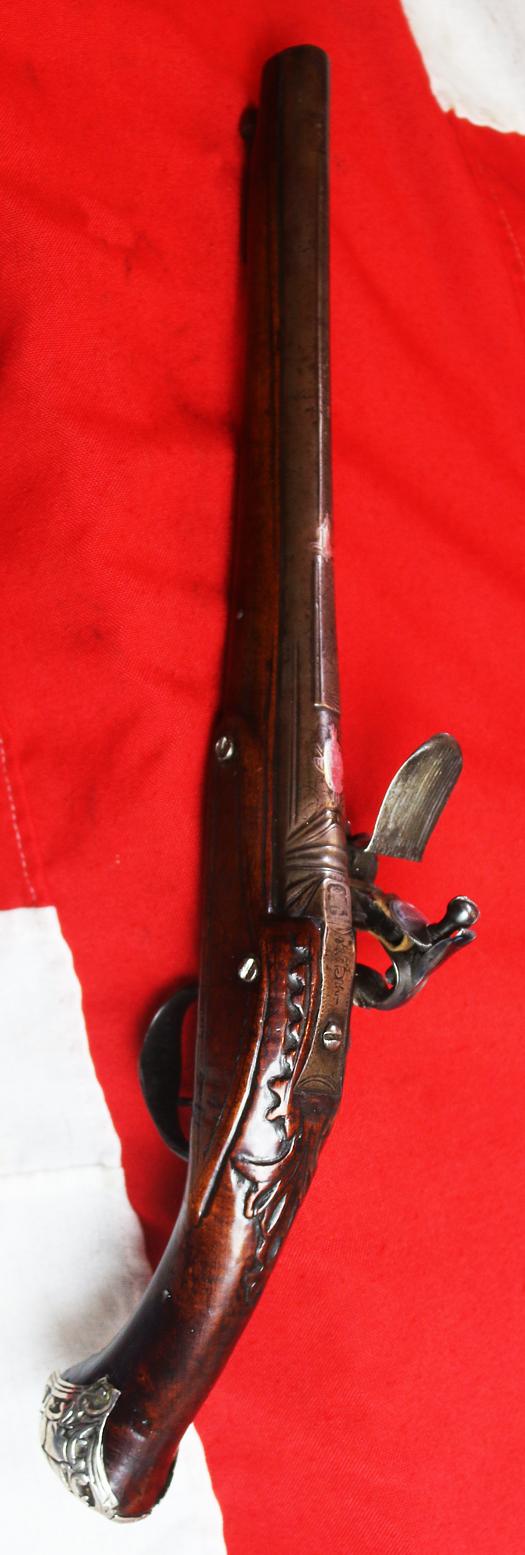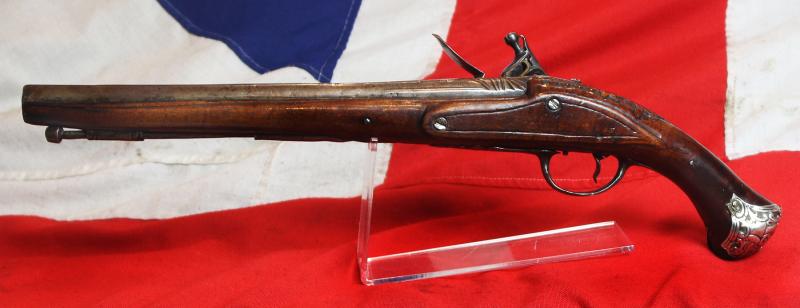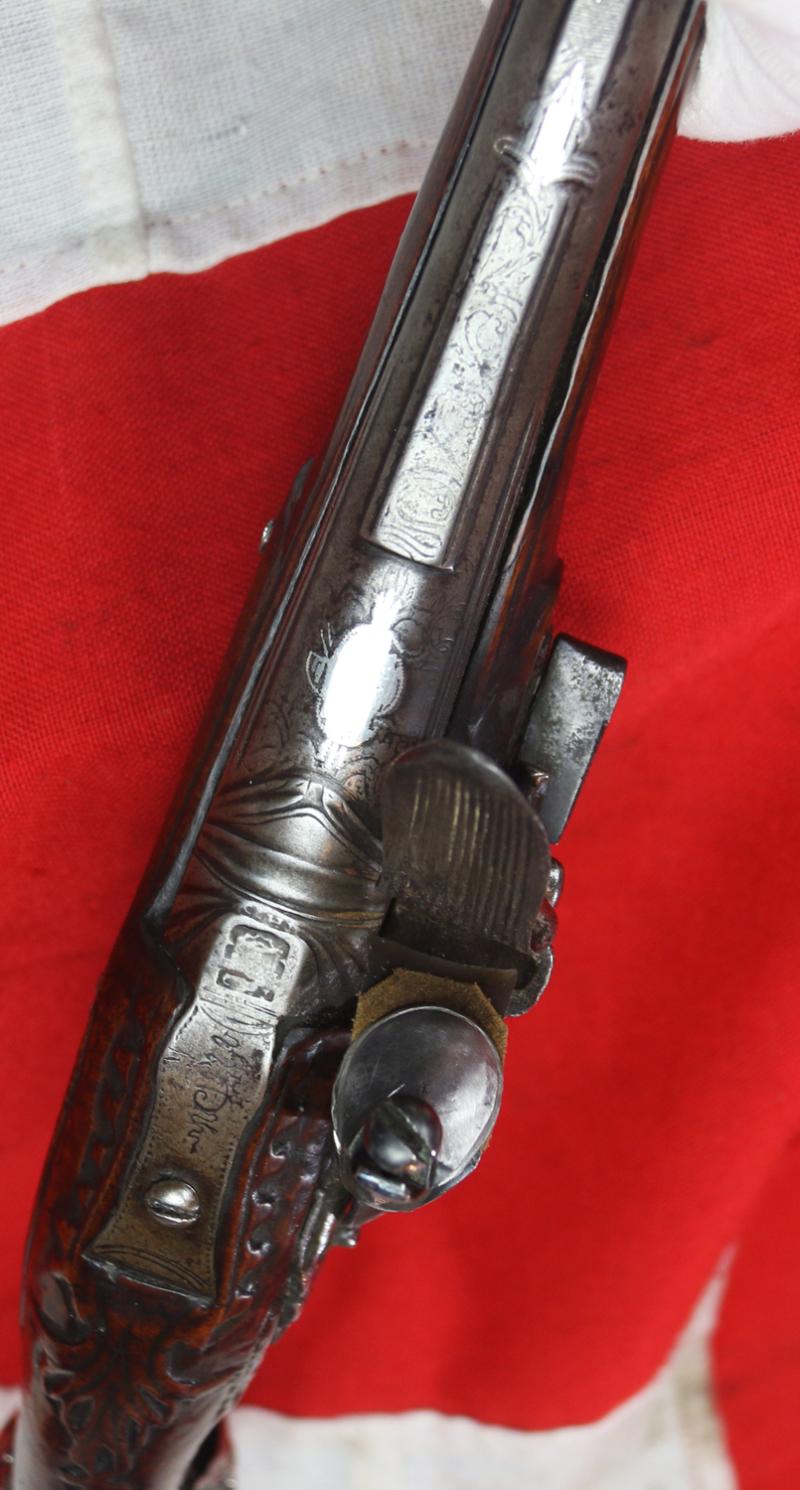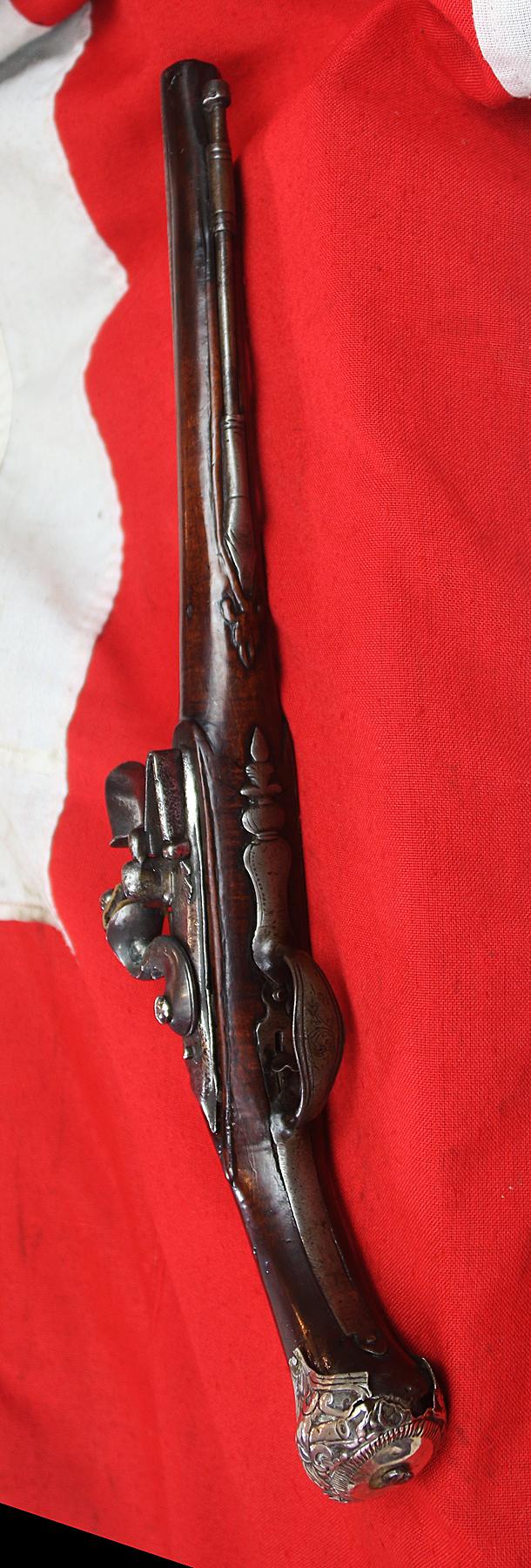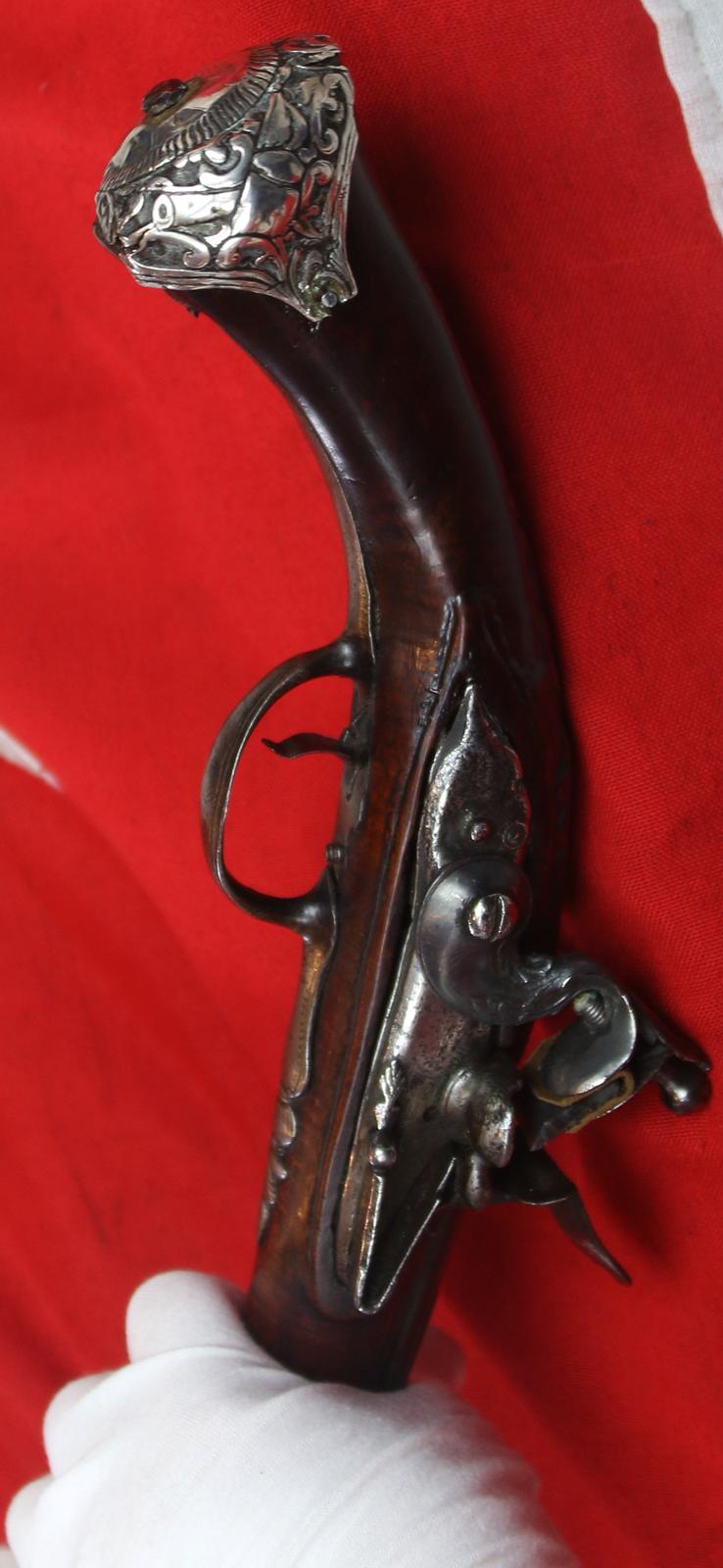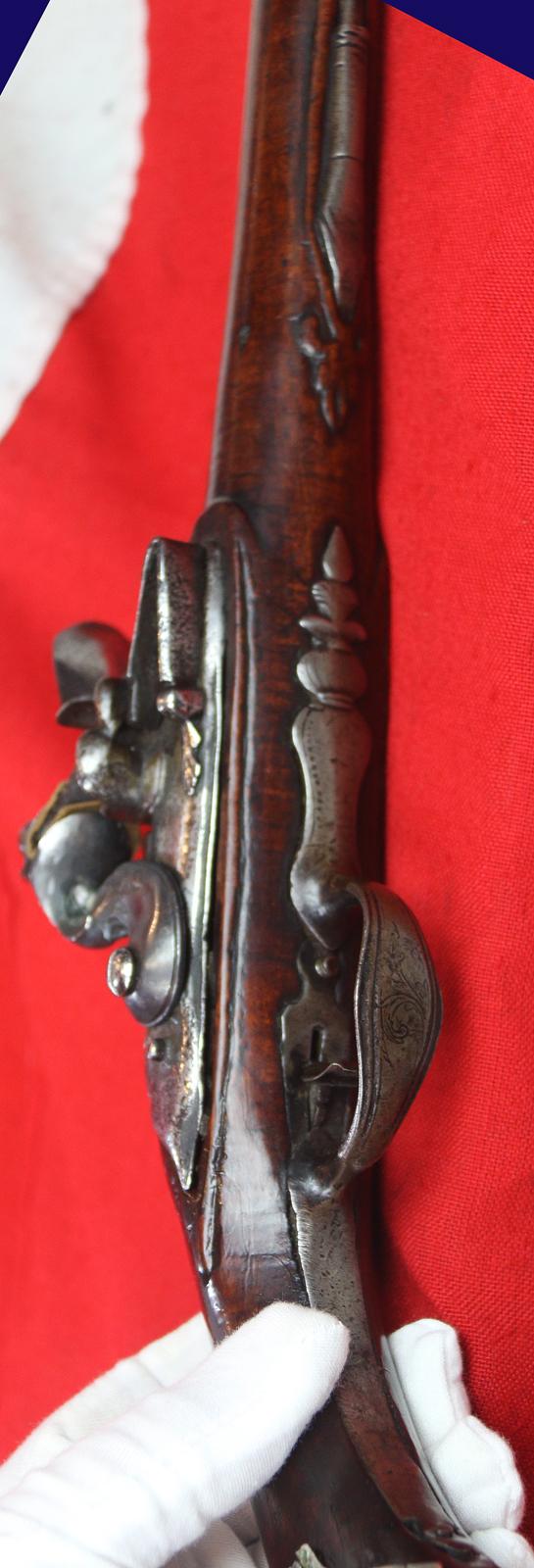A Beautiful Early 18th Century, Possibly Late 17th Century, Italianate Long Holster Flintlock Pistol of a Privateer, Nobleman or Officer From The Mediterranean Region, as Used Throughout the Seven Seas From the Golden age of Piracy.
Beautifully carved fine walnut stock, probably juglans regia, detailed with intricate carving throughout. A long holster or sash pistol with a very fine quality silver inlaid barrel, also beautifully chiselled, inlaid with a silver cartouche and an architectural pagoda, plus traces of silver inlay remaining on the top strap of the barrel and Florentine scrolling.
It has a silver buttcap, embossed with canon, and a traditional early 18th century 'banana form' flintlock action. An Italianate style flintlock, made in the Mediterranean region, and used throughout Europe, the Caribbean and the Americas from the early 18th century and continually in to the early 19th century, from the 7 Years War right through to the Napoelonic Wars, and throughout the Ottoman Empire.
This is exactly the type of flintlock one sees, and in fact expects to see, in all the old Hollywood 'Pirate' films. A beautifully sprauncy sidearm, with a distinctively long barrel.
This superb piece may very well have seen service with one of the old Corsairs of the Barbary Coast, in a tall masted galleon, slipping it's way down the coast of the Americas, to find it's way home to Port Royal,
This is the very form and choice of weapon that was in use during the days of the Caribbean pirates, used by privateers, and corsairs, but also by well booted officers of all the major powers, during that long historic era covering much of two centuries.
The Golden Age of Piracy is a common designation for the period between the 1650s and the 1730s, when maritime piracy was a significant factor in the histories of the Caribbean, the United Kingdom, the Indian Ocean, North America, and West Africa.
Histories of piracy often subdivide the Golden Age of Piracy into three periods:
The buccaneering period (approximately 1650 to 1680), characterized by Anglo-French seamen based in Jamaica and Tortuga attacking Spanish colonies, and shipping in the Caribbean and eastern Pacific.
The Pirate Round (1690s), associated with long-distance voyages from the Americas to rob Muslim and East India Company targets in the Indian Ocean and Red Sea.
The post-Spanish Succession period (1715 to 1726), when Anglo-American sailors and privateers left unemployed by the end of the War of the Spanish Succession turned en masse to piracy in the Caribbean, the Indian Ocean, the North American eastern seaboard, and the West African coast.
Narrower definitions of the Golden Age sometimes exclude the first or second periods, but most include at least some portion of the third. The modern conception of pirates as depicted in popular culture is derived largely, although not always accurately, from the Golden Age of Piracy.
Factors contributing to piracy during the Golden Age included the rise in quantities of valuable cargoes being shipped to Europe over vast ocean areas, reduced European navies in certain regions, the training and experience that many sailors had gained in European navies (particularly the British Royal Navy), and corrupt and ineffective government in European overseas colonies. Colonial powers at the time constantly fought with pirates and engaged in several notable battles and other related events.
Between the years 1719 and 1721, Edward England, John Taylor, Olivier Levasseur, and Christopher Condent operated from Madagascar. Taylor and Levasseur reaped the greatest prize in the history of the Golden Age of Piracy, the plunder of the Portuguese East Indiaman Nossa Senhora Do Cabo at Réunion in 1721, stealing diamonds and other treasures worth a total of £800,000. Around 2 billion pounds today.
Lovely condition for its age with stunning patination, naturally signs of use as to be expected. There is also clear evidence of its use as a 'skull crusher' by holding the barrel, once it has discharged its ball, and thus using it as a left handed club, alongside a cutlass the other hand, so the silver butt cap has the expected areas of loss. The spring action is tight in part, but due to its age it really should not be cocked.
Code: 24428
1595.00 GBP


